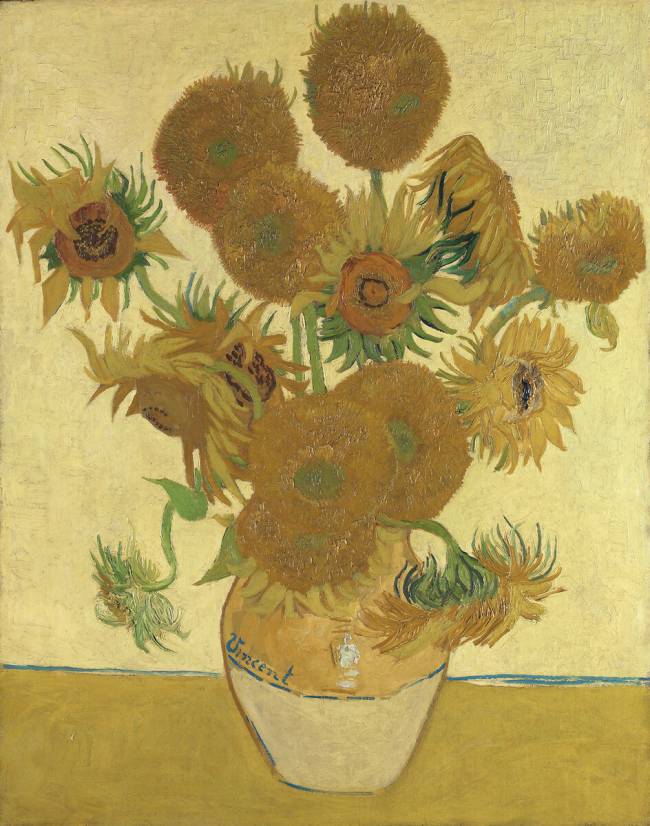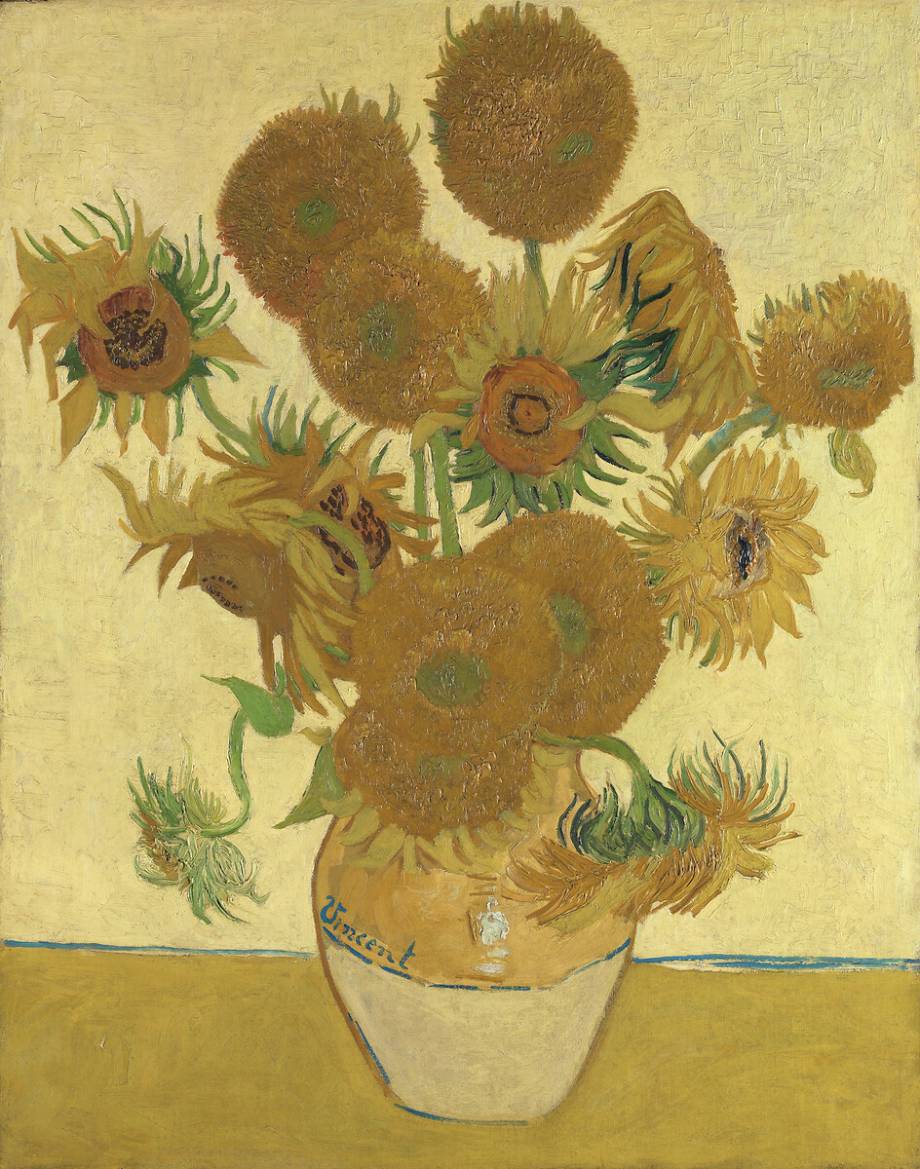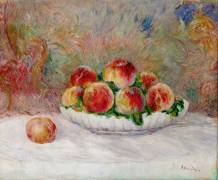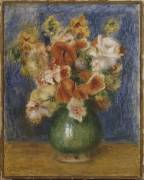Shop art print and framed art Sunflowers by Vincent van Gogh
Customise
Your art print
Sunflowers OF Vincent van Gogh
Sunflowers
Vincent van Gogh's sunflowers: a dazzling colour in art history
The paintings of sunflowers by Vincent van Gogh are among the most famous and recognisable works in the world. Each canvas, with its vivid hues and unique texture, tells a rich and emotionally intense story. This journey through the creation, impact and meaning of sunflowers will give you a better understanding of why these flowers have shaped not only the artist's career, but also the history of art.
A foray into the history of sunflowers
It was in the summer of 1888 that Vincent van Gogh settled in Arles, a small village in the south of France. Inspired by the vibrant light and the Mediterranean landscape, he began to produce a series of paintings depicting sunflowers. Van Gogh's main aim was to decorate the ‘Yellow House’, his planned studio for artists where he hoped to host his painter friends, notably Paul Gauguin.
Van Gogh painted two distinct series of sunflowers. The first series was painted in Paris in 1887 and shows the sunflowers lying flat. The second, and more famous, was in Arles in 1888, where the flowers are shown in vases. These works show different stages in the life of the sunflowers, from blossoming flowers to withered petals, symbolising the ephemeral beauty of nature.
The arrival of Paul Gauguin
In October 1888, Paul Gauguin joined Van Gogh in Arles. Van Gogh considered his paintings of sunflowers to be appropriate and worthy decorations for their shared home. The two artists had very different visions of art, which made their collaboration sometimes tumultuous. Nevertheless, this period was marked by intense creativity.
Gauguin admired Van Gogh's sunflowers, and this mutual admiration fuelled their artistic discussions. Despite their differences, Gauguin even painted a portrait of Van Gogh working on his famous sunflowers, underlining the mutual influence they had on each other.
Visual analysis of sunflowers
Aesthetically, Vincent Van Gogh's sunflowers are distinguished by the bold use of colour and the expressive technique of oil painting. This painting shines through its thick texture, applied with vigorous and often messy brushstrokes, capturing both the energy and freshness of the flowers.
The colour palette is dominated by bright yellows, reflecting the sunlight. The backgrounds of the paintings, usually blue or green, highlight the warm shades of the sunflowers, creating a vibrant contrast. Van Gogh also used touches of red and brown to detail the hearts of the sunflowers, adding depth and dimension to each flower.
Symbolism and interpretations
Beyond their visual beauty, these sunflowers possess a religious and personal significance for Van Gogh. For him, they symbolised gratitude and friendship. Van Gogh wanted his paintings to bring joy and hope to those who looked at them. He saw in these sunflowers a pure and simple form of expression of his emotions.
Sunflowers also evoke light and warmth; they are often seen as a representation of the human soul, constantly yearning for the sun. In some cultures, sunflowers symbolise loyalty and longevity, qualities that Van Gogh may have wanted to celebrate in his relationship with Gauguin and other artist friends.
The role of sunflowers in Van Gogh's career
For Van Gogh, painting these sunflowers was a crucial step in his artistic development. They represent his desire to create joyful, bright works, in stark contrast to the darker themes of his earlier work.
Painting sunflowers allowed Van Gogh to perfect his oil painting technique and develop a unique style that still influences artists today. Every stroke of colour and movement of the brush bears witness to the rapid evolution of his talent and his distinctive artistic vision.
Impact on Van Gogh's work
The Sunflowers remain among Van Gogh's most iconic works. They represent a turning point in his career, as he moved from painting influenced by Dutch realism to a freer, more colourful and dynamic approach. These specific works helped shape Van Gogh's reputation as a master of colour and light.
After leaving Arles, Van Gogh never stopped revisiting the theme of sunflowers in his letters, sketches and nocturnal reveries. This floral motif profoundly marked his contribution to the history of art, leaving an unrivalled visual legacy for future generations.
Sunflowers in their current context
Today, many of these masterpieces are scattered in museums around the world. London's National Gallery is home to one of the most iconic examples, attracting millions of visitors every year enchanted by these brilliant and evocative compositions.
There is also a continuing fascination with the techniques and emotions behind these works. Numerous temporary and permanent exhibitions celebrate sunflowers, highlighting their importance not only to Van Gogh but to all those who continue to find inspiration and solace in his floral creations.
The legacy of sunflowers
Through his sunflowers, Vincent van Gogh managed to capture something universally human: the desire for beauty and hope. As a symbol of resilience and love of life, these paintings continue to speak to people from all walks of life. Sunflowers have become an indelible part of our global cultural heritage.
In short, Van Gogh's sunflowers remain an ode to life, friendship and the eternal quest for light in the darkest of times. Through these simple flowers, Van Gogh created one of the most poignant and vivid works in the entire history of art.
This artwork is a painting from the modern period. It belongs to the impressionism style.
« Sunflowers » is kept at National Gallery, London, United Kingdom.



































